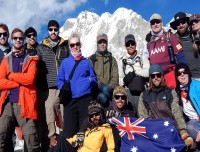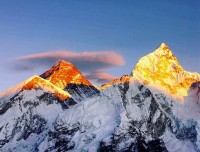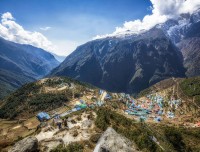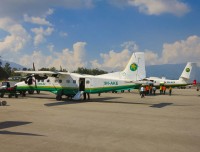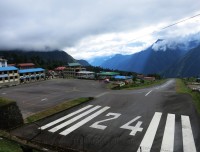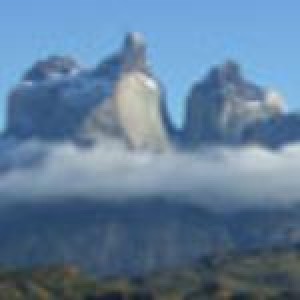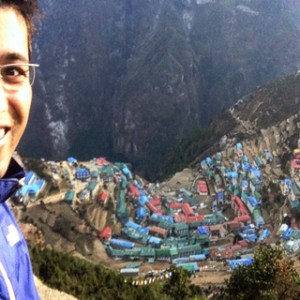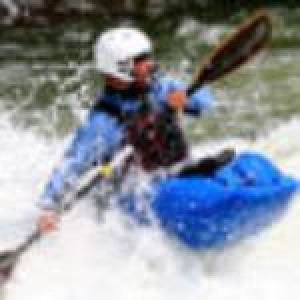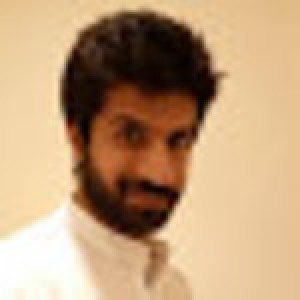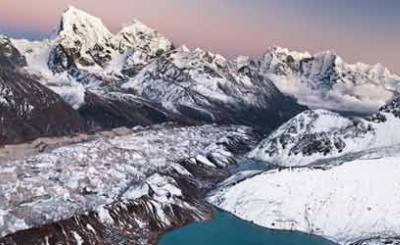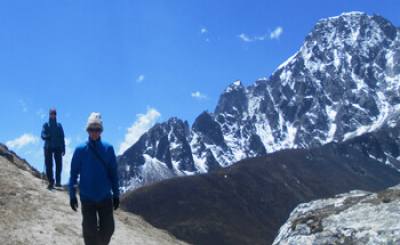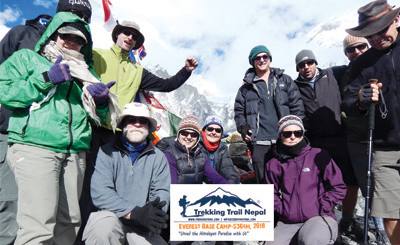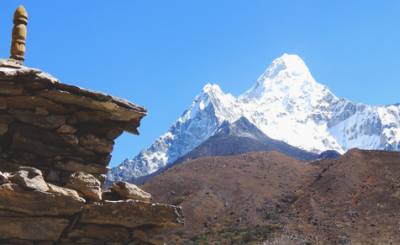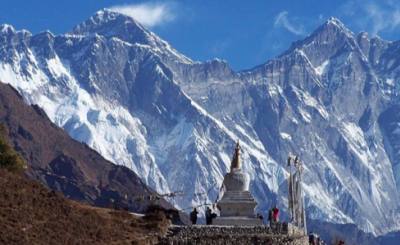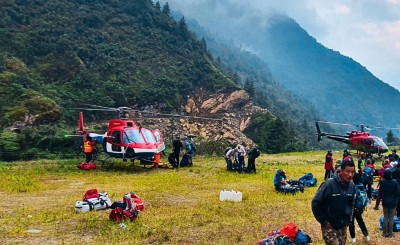The Everest Base Camp Trek Everest Trekking is the most popular trekking package in Nepal. Since Everest is the highest point on the Earth; Everest Base Camp Trekking Trail is the BEST hiking destination in the World. All 14 Days Everest Base Camp Trek begins with a 30-35 minutes flight from Kathmandu to Lukla during which you can enjoy the spectacular views of Mt. Everest along with Mt. Mahalangur, Mt. Lhotse, Mt. Ama Dablam, etc., and the amazing Himalayan terrain.
Mount Everest is also known as Qomolangma in Tibetan, which means Goddess Mother of the World, and SAGARMATHA in Nepalese which means The Head of the Sky. The daunting yet fascinating Mount Everest was first ascended by Tenzing Norgay Sherpa and Sir Edmund Hillary in 1953, a feat that has been emulated by many others to date. The Everest Base Camp Trek has been designed in a way to let travelers gather incredible lifetime memories while experiencing the distinctive diversity of nature, society, and unique cultures of the Everest Region.

Everest Base Camp Trek: The Best Trek of The World
From Lukla, the next destination for the approach to Mt. Everest is Namche Bazaar. It is a popular trade center of the Khumbu Trekking Region and also the Gateway to the Everest Region. This Everest Base Camp Trek ( EBC Trek ) trail will take us through the Dudh Koshi Valley, Phakding, Pheriche, Namche Bazaar, Dingboche, and many other places. The hike to the Everest View Hotel which has the closest view of Mt. Everest and other mountains of the Everest Region is the highlight of this part of the trek. On the way, the peaceful surroundings of the Everest Region are punctuated with blooms of rhododendrons, emeralds, and jade alpine forests that present mesmerizing views. The tranquillity of the landscapes, the traditional Sherpa villages, the beautiful Rhododendron Forest, the Khumbu Glaciers, and the zestful rivers all enhance the beauty of the trek to the Everest Region. Another short hike to Kala Patthar; ( meaning Black Rock) which is located on the southern ridge of the Pumori in the Himalayas will give the most captivating views of Mount Everest and many of its surrounding peaks. The Khumbu Glacier is the largest glacier in Nepal and the world's highest glacier located in the Everest Trekking Region. Sagarmatha National Park along with the Gumba, Chorten, and monasteries with its spiritual value the trek route is another Highlight of Everest Base Camp Trekking. And finally, the fascinating beauty of Mt. Everest is simply ravishing and leaves you spellbound! The Itinerary Everest Base Camp Trek thus counts as a lifetime achievement for travel lovers and presents them with an opportunity to return with unforgettable memories of the Everest Trekking Area.
Why Should I Do Everest Base Camp Trek?
The Everest Base Camp Trek is a popular trek in Nepal that takes you to the base of the world's highest mountain, Mt. Everest (8,848m). The Everest Trekking is a challenging and rewarding journey that offers a unique opportunity to experience the culture and natural beauty of the Himalayas. The trek typically takes around 14 days to complete and offers several reasons why it's worth considering because of the following highlights.
Scenery: The trek offers breathtaking views of some of the world's highest mountains, including Mt. Everest, Lhotse, Nuptse, and Ama Dablam.
Cultural experience: The trek passes through traditional Sherpa villages, where you can experience the unique culture, customs, and way of life of the local people.
Adventure: The trek offers a sense of adventure as you hike through remote mountain passes, cross suspension bridges, and experience the rugged terrain of the Himalayas.
Physical Challenge: The trek is considered to be a challenging hike, and it is a great opportunity to push yourself physically and mentally, while also gaining a sense of accomplishment.
Experiencing High Altitude: The trek takes you to high altitude and offers the opportunity to experience the effects of altitude on the body and mind.
Teahouse trek: The trek is a teahouse trek, which means that you can find accommodation and food along the way. This type of trek is good for travelers who want to have a comfortable trek but still have the chance to experience the natural and cultural beauty of the region.
It's important to note that the trek can be challenging and requires good physical fitness.
What is Everest Base Camp famous for?
Everest Base Camp is famous for being the starting point for trekkers and mountaineers attempting to climb Mount Everest, the highest mountain in the world. The base camp is located on the south side of the mountain in Nepal, at an altitude of about 5,364 meters (17,598 feet). It is also known for the spectacular views of the surrounding Himalayan peaks, including Mount Everest, and the unique culture and way of life of the local Sherpa people.
What is the success rate of Everest Base Camp Trek with Trekking Trail Nepal?
The success rate of the Everest Base Camp trek varies depending on how it is defined. The trek is considered a moderate to challenging hike and is considered a success if the trekker reaches the base camp. The success rate for reaching the base camp is high, with most trekkers who are physically fit and properly acclimatized able to complete the trek. In short, the Everest Base Camp's success rate is around 80-90% depending on the season, itinerary, and local climatic conditions. However, with Trekking Trail Nepal, it's 100%.
10 Reasons to do Everest Base Camp Trek September, October, November, and December
Before we move to other benefits as usual prior to COVID-19, You will get the pristine nature and mountains before other trekkers experience it. As COVID is getting normal, and easy to travel across the world as before the pandemic. Be first to choose the months of February, March, April, May, October, November, or December and Experience the Ultimate Trekking Dream of Millions of adventurers.
1. The world`s most dangerous and exceptional airport at Lukla 2,846 m
2. Everest Base Camp Trek (5,364m) for the world's highest mountain - Mount Everest (8,848m).
3. Spectacular views of the Himalayas from the highest viewpoint, Kalapatthar (5,550m).
4. Excursion of Khumjung valley, the most loved village of Sir Edmund Hillary; the first submitter of Mount Everest.
5. Immerse in the old rich Buddhist culture of monasteries, Sherpa traditions hospitality, and thin-air lifestyle.
6. Warm hospitality of the Highlanders, in the home of Sherpa villages
7. Enrich with rare flora of rhododendrons, pines, spruce, magnolia, shrubs of Juniper, alpine flowers/orchids
8. Eco-friendly trekking trail within the lap of the Himalayas in the World`s highest national park.
9. Trekking is the second most popular trekking region in the Annapurna region.
10. Home of the world`s record-holder mountain submitter.
11. World Best Hiking Trail as National Geographic
Meals on Everest Base Camp Trek
3 meals ( 1 Set Breakfast, 1 Item Lunch, and 1 Item Dinner ) will be served during the trekking days of Everest Base Camp Trek. Lunch is served on the way while dinner and breakfast are usually served during the stay at the teahouses. There are choices available in the Everest Base Camp compared to the Langtang or Annapurna Trekking. You won’t get the yummy food you usually eat at home but the taste of the meals available in the mountains is different and mouth-watering. Pizza, Noodles, Sandwiches, etc are available. Trekking Trail Nepal does not recommend eating meat during the trekking days to EBC as we cannot guarantee its freshness and it might upset your stomach and hamper your dream destination Everest Base Camp. But if you want, you can eat the non-vegetarian food items available. It&rsquo's your own choice from the menu to order the food. It gets ready after you order in the teahouses. So, kindly enjoy the 3 basic meals being provided during the whole trail of Best Everest Base Camp Trek. More about Meals on Trekking.
Everest Base Camp Trek Accommodation
You will have options for accommodation during your stay in Kathmandu Valley. Trekking Trail Nepal provides a tourist standard hotel with air-conditioned private rooms for our guests. There is a master bed or two single beds in the rooms. Unless you are single, we offer one double room for 2 guests. If you have your preference, kindly let us know ahead so that we can arrange accordingly for a comfortable stay. You Can Upgrade the Accommodation in Kathmandu at Extra Cost for your Everest Base Camp Trek.
During trekking in the Himalayas, please do not expect the best standard hotels. The hotels or lodges in the mountains are of a high standard providing all the basic facilities but they might be small in comparison to the hotels in Kathmandu. You will be amazed how these lodges/ hotels were built in such remote areas. Similar to the food, the accommodation is also better in Everest Base Camp than in Langtang or Annapurna trekking regions. In the mountains, it is usually twin-sharing rooms. If you prefer a single stay, you will have to pay extra charges for it. There are luxury standard rooms which are available but it is usually provided under the Everest Base Camp Luxury Trekking. Though the accommodation is always in the lodges or teahouses in the mountains, we still advise you to have your own sleeping bag with you during the whole trek.
Best Season for Everest Base Camp Trekking
The best recommended season for Everest Base Camp Trekking is usually spring and autumn seasons. Though trekking can be organized during any time of the year, February to May and October to December are considered better for trekking to Everest Base Camp. During these seasons, the views are clear and the stunning views of the magnificent mountains are eye-soothing and heart-touching. You will feel like staying there for the rest of your life but it’s quite not possible. During monsoon, the sky is cloudy, the visibility of the mountains is poor and it rains frequently leaving behind wet and slippery roads. So, it is better not to plan the trekking during the monsoon. The blossoming month is usually March to April, and you can enjoy the Rhododendron blooming everywhere on the way along with the other flowers and green jungles. Since the Everest Base Camp Trek is a golden opportunity and a lifetime wish, we request you plan your trip accordingly to make it live-worthy. For More
Equipment and Packing List for Everest Base Camp Trek
The Equipment and Packing List comprises all the possible gear that might be required during the trekking. Most of them are available in Kathmandu with a different range of qualities
and prices. It is your choice to buy the gear you want. There are local brands that are cheaper in comparison to international brands. The branded shops available in Kathmandu are The North Face, Marmot, Sherpa Adventure Gear, Mountain Hardwear, ANTA, etc. As there is no guarantee of the availability of the gear or equipment you want, we suggest you get the gear in your home country if it’s possible with you.
- Head: - Sun hat or warm fleece hat - Sunglasses with UV protection
- Lower Body: - Innerwear, Hiking shorts, Cotton Long pants, lightweight preferable, Fleece or woolen pants, waterproof pants
- Feet: - Lightweight warm, thick, woolen socks, Hiking boots, Gaiters for hiking, camp shoes (sandals or sneakers)
- Upper Body: - Thermal tops, Pullovers, Fleece jackets, Wind-stopper jackets, Waterproof jackets, Down-jackets,
- Hands: - Light or Heavyweight gloves or Mittens, waterproof outer
- Personal Hygiene: - Anti-bacterial hand soap or liquids, Wet tissues, Toilet paper, Fore More
50 Most Common Yet Important Questions and Information about Everest Base Camp Trek:
1. Which Base Camp Trek is the best for Everest?
There are two main base camps on Mount Everest: the South Base Camp in Nepal and the North Base Camp in Tibet. Both base camps offer spectacular views of the mountain and the surrounding Himalayan peaks.
The South Base Camp in Nepal is the more popular and traditional route for climbing and trekking to Mount Everest. It is the starting point for most climbing expeditions and is considered the CLASSIC route. This trek is a bit longer than North Base Camp, but it offers better views of the mountain and the surrounding peaks, as well as a chance to interact with the local Sherpa culture. The South Base Camp trek is also considered more challenging, with more difficult terrain and higher elevations to navigate.
The North Base Camp in Tibet, on the other hand, is a shorter and less strenuous trek, but with less scenic views and less exposure to local culture. Ultimately, the best base camp trek is a personal preference, it depends on your physical fitness, time, and preference for culture and scenery.
2. How difficult is a trek to Base Camp of Everest?
The trek to the base camp of Mount Everest is considered a moderate to challenging hike. The total distance of the trek is about 160 kilometers (100 miles) and typically takes 12-14 days to complete, depending on the route and the pace of the trekker. The trek involves hiking on steep and rocky terrain at high elevations, with the altitude at the base camp reaching 5,364 meters (17,598 feet). It can be physically demanding and requires a good level of fitness, as well as proper acclimatization to avoid altitude sickness.
The most challenging part of the trek is the final stretch to base camp, which is steep and rocky, with a significant altitude gain. The trail is also prone to high winds and cold temperatures, especially at night.
However, the trek can be made easier by hiring a porter or using yaks or mules to carry your gear, breaking up the hike into smaller stages to allow for proper acclimatization, and making sure to be properly prepared with the right gear and equipment.
3. The best time to do the Everest Base Camp Trek.
The best time to trek to the base camp of Mount Everest depends on personal preference and the type of experience you are looking for. However, there are two main trekking seasons: the pre-monsoon season (February to May) and the post-monsoon season (September to December).
The pre-monsoon season, which is the most popular time to trek, offers clear skies and mild temperatures, making for the best views of the mountain and the surrounding peaks. The weather is generally stable during this period and the trails are relatively dry, making for comfortable hiking conditions. However, it can be a bit crowded due to the high number of trekkers.
The post-monsoon season is also a good time to trek, with clear skies and mild temperatures. The trails are generally less crowded than during the pre-monsoon season and the landscape is lush and green, with the bonus of wildflowers in bloom. The weather is also generally stable during this period, but there is a greater chance of encountering rain or snow.
It is important to keep in mind that the weather in the Himalayas can be unpredictable, and even during the best trekking seasons, you may encounter unexpected rain or snow. It is also important to note that the monsoon season (June to August) is not a good time to trek, as the trails are muddy and slippery, and the chances of encountering landslides and flooding are high.
4: What season is best for hiking Everest Base Camp; Fall or Spring?
Both spring and fall are considered the best seasons for hiking to the base camp of Mount Everest. The main difference between the two is the weather and trail conditions.
Spring (February to May) offers the best views of the mountain and the surrounding peaks, with clear skies and mild temperatures. The weather is generally stable during this period and the trails are relatively dry, making for comfortable hiking conditions. The downside is that it can be a bit crowded due to the high number of trekkers.
Fall (September to December) also offers good weather, with clear skies and mild temperatures. The trails are generally less crowded than during the spring season and the landscape is lush and green, with the bonus of wildflowers in bloom. The weather is also generally stable during this period, but there is a greater chance of encountering rain or snow.
In summary, both seasons offer good weather and trail conditions, but spring is a bit more crowded and fall has a greater chance of encountering rain or snow. Ultimately, the best season for hiking to the base camp of Mount Everest depends on your personal preference and the type of experience you are looking for.
5 Best months of the year for Everest Base Camp Trek.
The best months to do the Everest Base Camp Trek are generally considered to be March, April, May, September, October, and November. These months provide the most favorable weather conditions and clear views of the mountains.
In the spring (March to May) the temperature is moderate and the trekkers can see the rhododendron blooming. This is also the time when the visibility is the best, and the mountain views are spectacular. September to November is also a great time to go as the monsoon season ends, and the sky is clear, making it the perfect time for stunning mountain views.
During June to August, trekking to EBC is not advisable because of the monsoon season which makes the trail muddy, and the visibility is poor. The winter months of December to February are also challenging due to the freezing temperatures, snow, and high winds which makes the trek difficult and dangerous.
This is very important to keep in mind that the weather in the mountains can be unpredictable, so it is always best to be prepared for any type of weather. And, it is also important to check with local tour operators and guides for the most up-to-date information regarding the trail conditions and weather forecast.
6. Cost of Everest Base Camp Trek
The cost of trekking to the base camp of Mount Everest can vary greatly depending on several factors such as the time of year, the route, the type of accommodation, and the level of support you choose. On average, the cost can range from $1,600 to $4,000 per person, but it can be higher or lower depending on your specific needs and choices.
Trekking Trail Nepal 14 days trek costs USD 1600 Per Person.
The main costs associated with the trek include:
Permits and fees: There are a number of permits and fees required for the trek, including the TIMS card and Sagarmatha National Park permit. These costs can range from $20 to $50 per person.
Transportation: The cost of transportation to and from the trekking trailhead, as well as any internal transportation required during the trek, can add up. Prices can vary depending on the mode of transportation but expect to pay around $400 for a return flight to Lukla, the starting point of the trek. Typically Flight ticket for you and a guide for Kathamndu-Lukla-Kathamndu.
Accommodation: The cost of accommodation can vary greatly depending on the type of accommodation you choose. Basic lodges and guesthouses along the trail can cost around $10 to $20 per night, while more comfortable lodges and teahouses can cost up to $50 per night. However, if you choose Luxury Lodge for Everest Base Camp Trek the price per night touches up to $280 per night
Food and Drinks: The cost of food and drinks can vary depending on your dietary preferences and the type of food you choose. Expect to pay around $30 to $45 per day for food and drinks along the trail.
Guide and porter: Hiring a guide and porter can greatly increase the cost of the trek. Guides can cost around $25 to $50 per day, while porters can cost around $20 to $25 per day.
Other costs to consider include gear and equipment rental, travel insurance, and tips for the guide and porter.
It is worth noting that these costs are just estimates and prices can fluctuate depending on the year, the company you choose, and the current economic situation.
7. Everest Base Camp Trekking routes.
The most popular route for the Everest Base Camp trek starts and ends in Lukla, a small town in the Solukhumbu district of Nepal. The route is usually taken in a counter-clockwise direction and typically takes 12-14 days to complete, depending on the pace of the trekker. The route is as follows:
Day 1: Fly from Kathmandu to Lukla and trek to Phakding (2610m)
Day 2: Trek from Phakding to Namche Bazaar (3440m)
Day 3: Rest day in Namche Bazaar for acclimatization
Day 4: Trek from Namche Bazaar to Tengboche (3867m)
Day 5: Trek from Tengboche to Dingboche (4360m)
Day 6: Rest day in Dingboche for acclimatization
Day 7: Trek from Dingboche to Lobuche (4940m)
Day 8: Trek from Lobuche to Gorak Shep (5140m) and visit Everest Base Camp (5364m)
Day 9: Hike to Kalapatthar (5545m) and back to Gorak Shep
Day 10: Trek from Gorak Shep to Pheriche (4240m)
Day 11: Trek from Pheriche to Namche Bazaar (3440m)
Day 12: Trek from Namche Bazaar to Lukla (2840m)
Day 13: Fly back to Kathmandu. Check the Itinerary in Details: 14 Days Everest Base Camp Trek Itinerary:
This route takes you through beautiful Sherpa villages, dense forests, and high-altitude passes, offering stunning views of the Himalayas, including Mount Everest, along the way. The trek also provides an opportunity to experience the unique culture and way of life of the local Sherpa people.
It is important to note that the itinerary can vary depending on the company you choose and your own preferences. Some variations of this route can also include a trek to Gokyo lakes or an ascent to Kala Patthar peak.
8. How many days does it take to reach Everest Base Camp?
The typical duration for a trek to the base camp of Mount Everest is 12-14 days, depending on the pace of the trekker and the route taken. The trek starts and ends in Lukla, a small town in the Solukhumbu district of Nepal, and takes you through the beautiful Sherpa villages, dense forests, and high-altitude passes, offering stunning views of the Himalayas, including Mount Everest, along the way.
The first part of the trek is relatively easy and takes you through the beautiful Dudh Koshi river valley, passing through small villages and lush forests. The trail becomes steeper and more challenging as you get closer to the base camp, with the final stretch to base camp being the most difficult part of the trek.
It is worth noting that the trek can be shortened or lengthened depending on your personal preferences and the route you choose. Some variations of this route can also include a trek to Gokyo lakes or an ascent to Kala Patthar peak. These options could extend the duration of the trek.
It is important to keep in mind that the trek to the base camp of Mount Everest is a challenging hike that requires a good level of fitness, proper acclimatization, and the right gear and equipment.
9. Food available on Everest trekking.
The food available on the trail to the base camp of Mount Everest is mostly traditional Nepalese and Sherpa dishes, with a few international options. The food is mostly prepared by the local lodges and teahouses along the trail.
Common options include:
Dal Bhat: A Nepalese staple dish made of lentils and rice. It is often served with vegetables and pickles.
Mo: Mos: A type of dumpling that can be filled with meat or vegetables.
Tibetan bread: A type of flatbread made of barley flour.
Curry: Vegetable or meat-based curries are also a common option along the trail.
Pasta: Spaghetti and macaroni are also popular options along the trail.
Snacks: Snacks such as popcorn, chocolate, and biscuits are also available.
Breakfast options include porridge, muesli, and eggs, and for lunch and dinner, you can have a variety of options such as soups, sandwiches, and potatoes.
It is important to keep in mind that the availability of food options may vary depending on the location and season. Vegetarians and vegans can also ask for special meals in advance, but this is best to bring some of your own snacks and food just in case.
Keep in mind that many of the teahouses are run by local families and they use ingredients that they can find locally and some of the food options may be limited or simple. It is also important to note that the food options may be different than what you are used to, but it is a great opportunity to try new dishes and get to know the local food culture.
10. Snacks are available on the Everest Base Camp Trek.
There are a variety of snacks available on the Everest Base Camp trekking trail. Here are a few examples:
Dried fruits: Dried fruits such as apricots, raisins, and cranberries are popular and easy-to-carry snacks. They are a good source of energy and provide essential vitamins and minerals.
Energy bars: Energy bars, such as granola bars, protein bars, and power bars, are a convenient and portable snack option. They are a good source of energy, and they can help sustain your energy levels during the trek.
Nuts: Nuts such as almonds, walnuts, and peanuts, are a healthy and high-energy snack. They provide good amounts of protein and healthy fats.
Chocolates: Chocolate bars, especially dark chocolate, can be a good source of energy and can help boost your mood.
Popcorn: Popcorn is a lightweight and easy-to-pack snack that can provide a good source of energy.
Instant noodles: Instant noodles are a popular snack option, especially for lunch. They are easy to prepare, and they provide a good source of energy and carbohydrates.
This also worth noting that, along the trail, you can also find local products such as momos, dal bhat, and Tibetan bread.
It is always a good idea to check with your trekking agency for more information about the availability of snacks on the trail and also to bring some snacks from home that you know you like.
In summary, there are a variety of snacks available on the Everest Base Camp trekking trail such as dried fruits, energy bars, nuts, chocolates, popcorn, instant noodles, momos, dal-bhat, and Tibetan bread. These snacks provide a good source of energy, carbohydrates, and nutrients that you need during the trek. It is always a good idea to check with Trekking Trail Nepal, as we will suggest according to season and situation.
11. Kinds of gear and equipment you need for the Everest Base Camp trek
The clothes, gear, and equipment you will need for the trek to the base camp of Mount Everest will vary depending on the time of year and your personal preferences. However, there are some essential items that you should bring:
Warm clothing: The temperature can drop significantly at night, especially at higher elevations, so it is essential to bring warm clothing such as thermal underwear, a fleece jacket, a down jacket, and a warm hat and gloves.
Hiking boots: A good pair of hiking boots is essential for the trek, as the trail can be steep and rocky.
Daypack: You will need a daypack to carry water, snacks, and other essentials during the trek.
Sleeping bag: You will need a good quality sleeping bag for overnight stays in the lodges and teahouses along the trail.
Headlamp: A headlamp is useful for early morning starts and for when the power goes out in the lodges.
Water bottle: A water bottle or hydration system is necessary for staying hydrated during the trek.
Sunscreen and sunglasses: Sunscreen and sunglasses are essential for protecting your skin and eyes from the sun's ultraviolet rays.
First aid kit: A small first aid kit with basic items such as band-aids, ibuprofen, and any personal medication is recommended.
Travel towels and toiletries: For overnight stays in the lodges and teahouses.
Other optional items that you might consider bringing are:
Trekking poles: Trekking poles can be helpful for balance and support on steep and rocky trails.
Camera: To capture the beautiful scenery along the trail.
Hand sanitizer: to keep your hands clean
Cash: for buying personal items and tips for the guide and porter, drinks, local donations, monastery entry fees, and on.
It is worth noting that many of the above items can be rented or purchased in Kathmandu, so you do not have to worry about bringing everything from home. Also, it is important to have a good backpack and make sure you are comfortable with it, as you will be carrying it for many days.
12. Drinking water availability. Is it safe? How much does it cost?
Drinking water is available during the trek to the base camp of Mount Everest, but it is not always safe to drink without treatment. The water from streams, rivers, and taps along the trail can contain bacteria, viruses, and parasites that can cause illness. It is recommended to treat the water by boiling, using a water filter, or using water purification tablets before drinking.
There are many teahouses and lodges along the trail that provide drinking water, and it is common practice to refill your water bottle or hydration system at these places. Some of the lodges and teahouses also provide purified water for a small fee, usually around $1 to $3 per liter, depending on the altitude you are at.
It is important to stay hydrated during the trek, as altitude and physical exertion can increase the risk of altitude sickness. It is also recommended to bring a water purification system or water purification tablets, in case you are unable to find safe drinking water along the trail.
It is also worth noting that, if you are concerned about your water supply, you could also opt for a guided trek, where a guide and porter will carry the water for you.
13. Does the flight to Lukla get delayed or canceled for many days?
It is possible for flights to Lukla, Nepal, to get delayed or canceled due to a variety of factors, such as poor weather conditions, maintenance issues, or high traffic at the airport. However, it is not common for flights to be delayed or canceled for many days at a time. It is best to check with your airline or tour operator for the most up-to-date information and to have a backup plan in case of flight disruptions.
14. What Is Mountain Sickness (AMS)? Will AMS affect me?
Acute Mountain Sickness (AMS) is a condition that can occur when individuals ascend to high altitudes too quickly. Symptoms of AMS can include headache, fatigue, nausea, shortness of breath, and lack of appetite. In severe cases, AMS can lead to fluid buildup in the lungs and brain, which can be fatal if not treated promptly.
The likelihood of an individual developing AMS depends on various factors, such as the rate of ascent, altitude, individual susceptibility, and overall health. Generally, the higher the altitude and the faster the rate of ascent, the greater the likelihood of AMS.
To minimize the risk of AMS, it is recommended to ascend gradually, allowing time for the body to acclimatize. It is also important to stay hydrated and properly nourished and to avoid alcohol and tobacco. Symptoms of AMS should be taken seriously and if they occur, descent or oxygen should be considered. It is also recommended to consult with a doctor before traveling to high altitudes and be familiar with the signs and symptoms of AMS.
15. Is Everest Base Camp Trek dangerous trekking in Nepal?
The Everest Base Camp Trek is a challenging trek that takes individuals through rugged terrain and high altitudes. With that said, the trek can be considered dangerous if proper precautions are not taken. Some of the risks associated with the trek include altitude sickness, hypothermia, frostbite, falls, and exposure to cold and wet weather. Additionally, there is also a risk of accidents and injuries due to the rough terrain and steep inclines.
However, many people safely complete the trek every year by being properly prepared, acclimatizing well, and using the services of experienced guides and porters. It is important to make sure that you are physically and mentally prepared for the trek and to have proper equipment and clothing. this is also highly recommended to have travel insurance covering the trip.
It is always a good idea to take advice from experienced trekkers, tour operators, and local guides, and to be aware of the risks and how to minimize them.
16. Is the Kalapatthar Hike worth doing in the Everest base camp trek?
The Kalapatthar hike is a popular and challenging side trek on the way to the Everest Base Camp. It is considered by many to be one of the highlights of the EBC trek. The hike offers incredible views of Mount Everest and the surrounding peaks, as well as a sense of accomplishment for reaching the highest point on the trek (5545m).
The hike up to Kalapatthar is steep and strenuous, but the views from the top are considered by many to be well worth the effort. The panoramic view from the summit of Kalapatthar is considered one of the best in the world and that is the main reason why many trekkers consider the hike worth doing.
However, the hike up to Kalapatthar is not for everyone, as it requires a good level of fitness and the ability to handle the high altitude. If you are planning on doing the EBC trek, it is worth considering whether the Kalapatthar hike is something that you would enjoy and are physically capable of doing. Keep in mind that it is always best to listen to your body and not to push beyond your limits.
17. I am physically fit with normal walking habits, can I do the Everest Base Camp Trek?
The Everest Base Camp Trek is a challenging trek that requires a good level of physical fitness and the ability to handle high altitudes. While the trek does not require any technical climbing or mountaineering skills, it does involve long days of walking on rough terrain and steep inclines.
If you are physically fit with normal walking habits, it is possible that you can complete the trek, but it is still a challenging and demanding journey. The trek involves walking for several days in a row, often with a heavy backpack and at high altitudes, which can be physically and mentally taxing.
To prepare for the trek, it is recommended to engage in regular exercises, such as hiking, running, or cycling, in the months leading up to the trek. It is also important to be familiar with the symptoms of altitude sickness and to acclimatize well during the trek.
If you have any health issues or concerns, It is best to consult with a doctor before embarking on the trek and to be honest with your tour operator or guide about your physical condition. Also best to be prepared for the trek, both physically and mentally.
18. Actual hiking start on Everest Base Camp Trek?
The actual hiking for the Everest Base Camp Trek typically begins in the town of Lukla, which is located in the Solukhumbu district of northeastern Nepal. Lukla is the starting point for many trekkers heading to the Everest Base Camp, as it is the location of the nearest airport and the starting point of the trail.
The trek starts by following the Dudh Kosi River, passing through small Sherpa villages, and entering Sagarmatha National Park. The trail then becomes steeper and more challenging as trekkers make their way to the higher elevations. Along the way, trekkers will pass through Namche Bazaar, Tengboche, Dingboche, and Gorak Shep, before finally reaching the base camp.
This is important to note that the trail and accommodations are well-established and there are many tea houses, lodges, and guesthouses that offer meals, accommodation, and other facilities for trekkers. It is also possible to hire a guide and porter, which can make the trek easier and more enjoyable.
19. Why should I do the Everest Base Camp Trek?
The Everest Base Camp Trek is a challenging and rewarding journey that offers a unique opportunity to experience the culture and natural beauty of the Himalayas. Some of the reasons why people choose to do the trek include:
The opportunity to see Mount Everest up close: The trek takes you to the base camp of the highest mountain in the world, and offers stunning views of Mount Everest and the surrounding peaks.
Immersion in the culture of the Sherpa people: The trek takes you through the heart of the Sherpa homeland, where you will have the opportunity to learn about their culture, customs, and way of life.
The physical and mental challenge: The trek is a challenging and rewarding journey that requires a good level of physical fitness and mental determination. Completing the trek is a significant accomplishment and a great personal achievement.
The natural beauty: The trek takes you through some of the most beautiful and diverse landscapes on earth, from lush rhododendron forests to high-altitude glaciers.
The sense of adventure: The trek offers a sense of adventure, a chance to explore the unknown, and step out of your comfort zone. Overall, the Everest Base Camp Trek is a once-in-a-lifetime opportunity to experience the majestic beauty of the Himalayas, challenge yourself physically and mentally, and learn about the culture of the Sherpa people.
20. How many different hiking routes are there to reach the Everest base camp trek?
There are several different routes to reach the Everest Base Camp, but the most popular and well-established route is the one starting from Lukla and ending at the base camp. This route is also known as the CLASSIC route and is the most commonly used by trekkers. The trekking trail starts in Lukla and goes through the villages of Namche Bazaar, Tengboche, Dingboche, Gorak Shep, and finally to the Base camp. The trail then returns the same way back to Lukla.
There is also another route to reach the base camp from Jiri which is known as the Jiri Everest Base Camp trek, which is a longer and more strenuous trek. This route starts in Jiri and goes through the villages of Bhandar, Sete, Junbesi, and Namche Bazaar. This route is not as popular as the Lukla route but it is still an alternative for trekkers who are looking for a longer and more challenging trek.
In addition, there are also some alternative routes that are less traveled and more challenging, such as the Gokyo Lakes trek, which takes you to the Gokyo Lakes and then up to the base camp. Some trekkers also choose to combine different routes to make the trek more challenging and interesting.
It is important to keep in mind that the weather and trail conditions can vary depending on the route and the time of the year, so it is always best to check with local tour operators and guides for the most up-to-date information and to plan accordingly.
21. How far is Everest Base Camp Trek from the Last Hotel?
The last hotel on this route is in Gorak Shep, which is located approximately 5.5 km (3.4 mi) away from the Base camp.
The most popular and well-established route starts in Lukla and goes through the villages of Namche Bazaar, Tengboche, Dingboche, Gorak Shep, and finally to the Base camp. The total distance of this route is approximately 130 km (80 mi) round trip, and it takes around 12-14 days to complete. However, if you Are taking the Jiri to EBC trek, the distance from the last hotel to the EBC is longer. The total distance of this route is approximately 220km (137 mi) round trip and takes about 18-21 days to complete.
This is important to keep in mind that the distance and duration of the trek can vary depending on the route, the pace of the trek, and the individual trekkers' physical condition. It is always best to check with local tour operators and guides for the most up-to-date information and to plan accordingly.
22. How crowded will the Everest Base Camp Trekking trail?
We cannot predict the exact amount of crowd on the Everest Base Camp Trekking trail in 2025 as it depends on multiple factors like season, weather conditions, political situation, etc. However, generally, the trail is considered to be crowded during the peak seasons of spring and autumn.
As we are local trekking agencies, we can say the trail will be busy and likely to meet the records of 2019 before COVID-19. This prediction is made with all the business associates, trekking lodges on the Everest base camp, and other trekking companies.
23. What to pack for 14 Days Everest Base Camp Trek?
Here is a general list of items to consider packing for a 14-day trek to Everest Base Camp:
Backpack: A comfortable, well-fitting backpack that can hold all of your gear.
Clothing: Hiking boots, warm socks, waterproof and breathable jacket, fleece or insulated jacket, thermal base layers, lightweight long-sleeved shirt, quick-drying pants, hat, gloves, and sunglasses.
Sleeping gear: Sleeping bag, sleeping pad, and a lightweight tent (if camping)
Personal hygiene: Toothbrush and toothpaste, hand sanitizer, wet wipes, and toilet paper.
First aid kit: Including band-aids, blister care, ibuprofen, and any personal medications.
Personal items: Headlamp, camera, sunscreen, lip balm, and a water bottle.
Trekking poles are optional but recommended
Personal documents like passport and visa, Insurance, Emergency contact information
Cash or credit card for your personal expenses. ( CC Fees are above 4% )
Snacks and energy bars to keep you energized during the trek
It is always best to check with your trekking agency for a detailed list of recommended items and to make sure you are prepared for the specific conditions of the trail.
24. Do I need to purchase Everest trekking gear and equipment at home or it is available in Kathmandu, Nepal?
You can purchase trekking gear and equipment in Kathmandu, Nepal, as well as rent gear at a reasonable cost. However, it is recommended to bring as much of your own gear as possible, as the quality and fit of rental equipment may not be to your liking. It is also always a good idea to bring your own personal items such as hiking boots, a sleeping bag, and trekking poles.
In Kathmandu, you can find a wide range of outdoor gear and equipment shops that sell a variety of products, from high-end technical gear to more basic equipment. Prices are usually lower than in Western countries, but it is always recommended to check the quality and warranty of the products before buying. Also, you can hire porters to carry your equipment and other gear, but you need to make sure that you have a fair and reliable porter service provider.
In summary, you can find good quality gear and equipment in Kathmandu, but it is always better to bring your own gear that you are comfortable with.
25. What kinds of shoes or boots are the best Everest Base Camp Trek?
Hiking boots are the best type of footwear for the Everest Base Camp trek. They provide the support and protection that your feet need when trekking on rough and uneven terrain. Look for boots with a sturdy, high-cut design that covers your ankles and offers good support. The soles should be made of a durable, slip-resistant material and have a good tread pattern for grip on rocky and slippery surfaces. Waterproof boots are also a good option as they will keep your feet dry in wet conditions.
Additionally, make sure the boots are well broken in before you start your trek. This will help prevent blisters and other foot problems. Wearing in the boots for a few weeks before the trip, by taking short hikes in them or by just wearing them around the house, will help make sure they're comfortable and that your feet are used to them.
Lastly, This is also vital to bring a good pair of hiking socks with you as well. They should be made of moisture-wicking material and provide good cushioning and support. In summary, the best shoes or boots for the Everest Base Camp trek are sturdy, high-cut, waterproof hiking boots with good soles that have a good tread pattern and a well-broken-in.
26. What currency did they use in Everest Base Camp Trek?
The currency used in the Everest Base Camp trek is the Nepalese Rupee (NPR). However, US dollars are also widely accepted in the trekking and tourism industry in Nepal, so another good idea is to have a mix of both currencies with you.
Worth noting that many places in the Everest region are remote and cash is the only form of payment accepted, so you should make sure to bring enough cash with you, as ATMs and banks are not readily available. Also, make sure to carry small denominations as change can be hard to come by.
You can also use a credit card or debit card in some of the larger towns, but again, it is better to have cash as a backup. It is also a good idea to check the current exchange rate before your trip, as it fluctuates over time. With Trekking Trail Nepal, our guide will help to deal with this situation.
27. Is it possible to trek to Everest Base camp and fly back to Kathmandu by Helicopter?
Yes, it is possible to trek to Everest Base Camp and fly back to Kathmandu by helicopter. This is a popular option for people who want to experience the trek but are short on time, or unable to complete the full trek due to physical limitations.
As this demand is increasing: Trekking Trail Nepal offers the Everest Base Camp Heil Trek.
After reaching the base camp, the helicopter will pick you up and fly you back to Kathmandu. This eliminates the need for you to trek back to Lukla, which can take several days and can be physically demanding.
It is worth noting that the cost of a helicopter ride back to Kathmandu is significantly higher than a regular flight from Lukla, so it is not a cheap option. Also, the weather in the Himalayas can be unpredictable, and flights can be delayed or canceled due to bad weather.
You can check with your trekking agencies for the availability and cost of this service. They can also help you to arrange the necessary permits, and provide you with a reliable helicopter operator.
In short, it is possible to trek to Everest Base camp and fly back to Kathmandu by helicopter, but it is more expensive than taking a flight from Lukla, and it is weather-dependent.
28. How to find trusted Everest base camp Trek companies?
Here are a few ways to find a trusted trekking company for the Everest Base Camp trek:
Research: Look up different trekking companies online and read reviews from past customers. Look for companies that have a good reputation and have been in business for a while.
Ask for recommendations: Ask friends, family, or other travelers who have been on the trek for their recommendations.
Check for certification: Make sure the company is certified by the Nepal Tourism Board, which is a government agency that regulates the trekking industry in Nepal.
Check for insurance: Make sure the company is insured, as it will protect you in case of an accident or emergency. Please Note: Trekking Trail Nepal has a 100% Success Rate and Zero Rescue.
Look for Responsible tourism commitments: Check if they have a commitment to Responsible Tourism, like fair treatment of porters, and support to local communities and the environment.
Compare prices and services: Compare the prices and services of different companies and make sure you get the best deal for your money.
Personal interaction: Try to talk or meet the company representative or guide, it will give you an idea about their level of knowledge, professionalism, and commitment.
In summary, Research, asking for recommendations, checking for certification, insurance, Responsible Tourism commitments, comparing prices and services, and personal interaction are some of the ways to find a trusted trekking company for the Everest Base Camp trek.
Above all, As the questions about, who is guiding you and who will be your porter. Even you can search for their review and position in the office.
29. How to prepare to trek to Everest Base Camp?
Here are a few ways to prepare for a trek to Everest Base Camp:
Physical fitness: The trek is a physically demanding one, so this is important to be in good physical shape. Try to engage in regular exercise and cardiovascular activities such as running, cycling, or swimming in the months leading up to the trek.
Altitude training: The trek reaches an altitude of over 5,000 meters, so this is important to acclimatize properly. Try to spend some time at a high altitude before the trek, if possible.
Research and plan: Research the trek and plan your itinerary, including the best time to go, and the necessary permits, equipment, and gear.
Get the necessary vaccinations: Consult with your doctor and get the necessary vaccinations and medications for traveling to Nepal.
Pack the right gear and clothing: Make sure you have the right gear and clothing for the trek, including good hiking boots, warm clothing, a waterproof jacket, and a sleeping bag.
Learn about the culture and customs: Learn about the culture and customs of the area you will be visiting, so you can show respect and be a responsible traveler.
Get travel and medical insurance: Make sure you have travel and medical insurance that covers you for the duration of the trek.
Be mentally prepared: Be mentally prepared for the challenges that come with trekking in high altitude and remote regions, and also be open to adjusting your plans if necessary.
In summary, Physical fitness, altitude training, research, and planning, getting the necessary vaccinations, packing the right gear and clothing, learning about the culture and customs, getting travel and medical insurance, and being mentally prepared are important things to consider when preparing for the trek to Everest Base Camp.
30. Everest Base Camp Trek special packing list for the female trekker.
Here is a packing list for a female trekker for the Everest Base Camp trek:
Clothing: A good-quality waterproof and breathable jacket, a warm down jacket, thermal base layers, quick-drying pants, fleece or insulated pants, a hat, gloves, and sunglasses. You should also pack a few lightweight long-sleeved shirts and shorts or skirts for warmer days.
Undergarments: Pack several sets of moisture-wicking sports bras and underwear, as well as an extra set of warmer long underwear.
Sleeping gear: A lightweight and compact sleeping bag, a sleeping pad, and a lightweight tent if you plan to camp.
Footwear: A comfortable and well-broken-in pair of hiking boots with a sturdy design that covers your ankles, and a good grip on the soles. Also, pack a pair of lightweight camp shoes or sandals for the evenings.
Personal hygiene: A small towel, toothbrush, toothpaste, wet wipes, and a small bottle of hand sanitizer.
First aid: Include blister care, ibuprofen, pain relievers, and any personal medications you may need.
Other gear: a headlamp, a personal water bottle, a camera, sunscreen, lip balm, and insect repellent.
Trekking poles: It is helpful to have trekking poles for the trek, they help to distribute weight and provide additional stability on uneven terrain.
Personal documents: Passport, visa, insurance, emergency contact information.
Cash or credit card for personal expenses.
Female hygiene products: Pack enough sanitary napkins or tampons for the duration of the trek.
Warm and comfortable clothing for the camps and teahouses.
It is always a good idea to check with your trekking agency for a detailed list of recommended items and to make sure you are prepared for the specific conditions of the trail.
31. Do I need travel insurance for Everest Base Camp Trek?
Yes, it is highly recommended to have travel insurance for the Everest Base Camp trek. The trek takes place in a remote area with limited access to medical facilities and unpredictable weather conditions. Travel insurance will provide coverage for unexpected events such as medical emergencies, trip cancellations, and lost or stolen gear.
When looking for travel insurance, make sure to choose a policy that includes coverage for trekking and adventure activities, as well as emergency evacuation and medical expenses. It is also important to check if the policy covers high-altitude trekking, as some policies may have exclusions for certain activities.
It is also important to keep your insurance details, emergency contact numbers, and a copy of your policy with you during the trek. In case of an emergency, you or your emergency contact can use this information to get in touch with your insurance company.
In summary, it is highly recommended to have travel insurance for the Everest Base Camp trek to cover unexpected events such as medical emergencies, trip cancellations, and lost or stolen gear. Make sure to choose a policy that includes coverage for trekking and adventure activities, as well as emergency evacuation and medical expenses.
Trekking Trail Nepal has Zero Rescue with 100% Success So Far.
32. Everest Base camp trek Accommodation is available.
During the Everest Base Camp trek, accommodation is available in a variety of forms, including
Teahouses: These are basic guesthouses found along the trail that provide accommodation, food, and drinks. They range from simple, rustic lodges to more comfortable, modern facilities.
Tented Camps: On some parts of the trek, you can opt for camping in a tent. The trekking agency will provide tents and other camping equipment, and staff will set up camp and prepare meals.
Lodges: In some of the larger villages on the trek, you may find more comfortable lodges with private rooms and attached bathrooms.
Homestay: Some local families open their homes to trekkers, providing a unique and authentic experience.
The quality of the accommodation varies depending on the location, altitude, and facilities. However, it is important to keep in mind that the trek takes place in a remote region, so you should expect basic facilities and amenities. In general, the higher you go, the more basic the accommodations will be.
It is recommended to check with your trekking agency for the type of accommodation they provide and also to ask them about the hygiene and cleanliness of the accommodation. In summary, during the Everest Base Camp trek, accommodation is available in the form of teahouses, tented camps, lodges, and homestays. The quality of the accommodation varies depending on the location, altitude, and facilities. Keep in mind that the trek takes place in a remote region, so you should expect basic facilities and amenities.
33. How much money do I need to take on the Everest Base Camp Trek for my personal expenses?
The amount of money you need to take on the Everest Base Camp trek for personal expenses will depend on your individual needs and preferences. However, here are a few things to consider:
Food and drinks: Meals are included in the cost of the trek with most of the trekking packages, but you may want to budget for additional snacks, drinks, and meals in the towns and villages along the trail.
Tips: It is customary to tip your guide and porters at the end of the trek, so you should budget for this expense.
Souvenirs: You may want to budget for souvenirs or other small items you may want to purchase along the way.
Emergency funds: A good idea to have some extra money set aside for emergencies or unexpected expenses.
Additional activities: If you plan to do any additional activities, like a side trek or a visit to a local monastery, you will need to budget accordingly.
This is difficult to give an exact figure as the cost of living and prices in Nepal fluctuate over time, but generally, a budget of around $30 to $60 per day should be sufficient for personal expenses, including food, drinks, tips, and souvenirs. It is always a good idea to carry some extra cash, especially in case of an emergency. It is also worth noting that credit cards and ATMs can be hard to find in the remote areas of the trek, so it is best to carry cash for your personal expenses.
In summary, The amount of money you need to take on the Everest Base Camp trek for personal expenses will depend on your individual needs and preferences. A budget of around $30 to $60 per day should be sufficient for personal expenses, including food, drinks, tips, and souvenirs. A good idea to carry some extra cash, especially in case of an emergency.
34. Drinking Water facility on Everest Base Camp Trek.
Drinking water is readily available on the Everest Base Camp trek, but it is important to be aware of the quality and safety of the water you consume.
Tap water: Tap water is not safe to drink in Nepal, and it is best to avoid it altogether.
Boiled water: Many teahouses and lodges along the trail will provide boiled water for drinking. This water is safe to consume, but it may not taste as good as filtered or purified water.
Filtered water: Some teahouses and lodges also provide filtered water, which is a better option than boiled water.
Purified water: You can also purchase bottles of purified water along the trail or in the larger towns.
Water purification tablets: Carrying water purification tablets or a water purification system is also a good option.
Also recommended to bring a water bottle for refilling and to reduce the use of single-use plastic bottles. It is important to stay hydrated during the trek, especially at high altitudes, so make sure to drink plenty of water throughout the day. It is always a good idea to check with your trekking agency for more information about the water sources and drinking water options on the trail.
In summary, Drinking water is readily available on the Everest Base Camp trek, but it is important to be aware of the quality and safety of the water you consume. Boiled water, filtered water, and purified water are common options, but carrying water purification tablets or a water purification system is also a good option. It is recommended to bring a water bottle for refilling and to reduce the use of single-use plastic bottles.
35. How much water should I drink every day during the EBC Trek?
It is important to stay hydrated during the trek, especially at high altitudes, so it is recommended to drink at least 3-4 liters of water per day. The exact amount will depend on factors such as your level of activity, temperature, and altitude.
Keep in mind that at high altitudes, your body needs more water to function properly as the air is thin and dry and it can cause dehydration more easily. Additionally, when you are dehydrated, you may experience symptoms such as headaches, fatigue, and dizziness.
It is also important to drink water regularly throughout the day, rather than waiting until you feel thirsty. Try to drink water before, during, and after meals, and always carry a water bottle with you.
Worth noting that drinking water is not only important to hydrate your body but also to aid in altitude acclimatization. Staying hydrated can help prevent altitude sickness and other high-altitude health issues.
Always a good idea to check with your trekking agency for more information about the water sources and drinking water options on the trail and also to consult with your doctor before the trek.
In summary, it is recommended to drink at least 3-4 liters of water per day during the EBC trek, and to drink water regularly throughout the day, rather than waiting until you feel thirsty. Staying hydrated can help prevent altitude sickness and other high-altitude health issues, and it is important for altitude acclimatization.
36. Is alcohol good during hiking to Everest Base Camp?
Alcohol consumption is not recommended during the Everest Base Camp trek as it can have negative effects on your body and impair your ability to trek safely. Here are a few reasons why:
Dehydration: Alcohol is a diuretic, which means it increases urine production and can dehydrate your body. Dehydration can cause fatigue, headaches, and altitude sickness.
Altitude sickness: Alcohol consumption can increase the risk of altitude sickness, as it can affect the body's ability to acclimatize to high altitude.
Impairment: Alcohol can impair your judgment, coordination, and reaction time, making it more difficult to navigate the trail safely.
Nutrition: Alcohol contains empty calories and can reduce your appetite, which can affect your ability to take in the necessary nutrients your body needs to perform well in the trek.
Sleeping: Alcohol can disrupt your sleep, which can be dangerous at high altitudes.
Mental and Physical Performance: Alcohol can reduce mental and physical performance, which can be dangerous in the challenging conditions of the trek.
It is worth noting that, while alcohol is not recommended during the trek, some trekkers may choose to have a celebratory drink when they reach Base Camp. Important to be aware of the risks and to consume alcohol in moderation if you choose to do so.
In summary, Alcohol consumption is not recommended during the Everest Base Camp trek as it can have negative effects on your body such as dehydration, altitude sickness, impairment, reduced nutrition, and poor sleep, which can affect your mental and physical performance in the challenging conditions of the trek. While alcohol is not recommended during the trek, some trekkers may choose to have a celebratory drink when they reach Base Camp, it is important to be aware of the risks and to consume alcohol in moderation if you choose to do so.
37. How can I plan for the Everest Base Camp trek in 2026?
You can Join Trekking Trail Nepal Everest Base Camp Trek 2024 or Here are a few steps to help plan for an Everest trekking this year:
Choose the best time to go: The best time to go on the trek is from September to November and from March to May when the weather is stable and clear. In 2024, you can plan your trek for either of these seasons.
Research trekking companies: Look for a reputable and experienced trekking company that offers a package that meets your needs. Read reviews and ask for recommendations.
Obtain necessary permits: Obtain the necessary permits, including TIMS (Trekkers Information Management System) and Sagarmatha National Park permit. Your trekking company can help you with this process.
Get in shape: Start preparing physically for the trek by engaging in regular exercise and cardiovascular activities such as running, cycling, or swimming.
Get the right gear and equipment: Make sure you have the right gear and equipment for the trek, including good hiking boots, warm clothing, a waterproof jacket, and a sleeping bag.
Make travel arrangements: Make travel arrangements for flights, transportation to and from the trailhead, and accommodation in Kathmandu.
Get travel and medical insurance: Make sure you have travel and medical insurance that covers you for the duration of the trek.
Learn about the culture and customs: Learn about the culture and customs of the area you will be visiting, so you can show respect and be a responsible traveler.
In summary, to plan for the Everest Base Camp trek in 2024, you should choose the best time to go, research trekking companies, obtain necessary permits, get in shape, get the right gear and equipment, make travel arrangements, get travel and medical insurance, and learn about the culture and customs.
38. What do you suggest Private Group Trek or Solo Trek to EBC?
The decision to go on a private group trek or a solo trek to Everest Base Camp (EBC) depends on your personal preferences, budget, and experience. Here are a few things to consider when deciding:
Private group trek: Going on a private group trek is a good option if you prefer the company of others and the security of being part of a group. It also means you can share the cost of the trek with others in the group, which can be more cost-effective.
Solo trek: A solo trek can be a great option if you are an experienced trekker, enjoy your own company, and want the freedom to make your own decisions about the trek. However, it can be more expensive and also risky in case of emergency.
Safety: Trekking in a group can be safer than trekking solo, as there are others to rely on in case of an emergency.
Cost: A private group trek can be more cost-effective than a solo trek as you can share the cost of the guide, porter, and other expenses.
Flexibility: A private group trek has a set itinerary, and you may not have as much flexibility in terms of the itinerary and the pace of the trek. On the other hand, a solo trek allows you to set your own pace and make changes to the itinerary as you see fit
39. To what extent is altitude sickness likely?
Altitude sickness, also known as Acute Mountain Sickness (AMS), is a common condition that can occur at high altitudes. The likelihood of experiencing altitude sickness depends on several factors, including your personal susceptibility, the altitude you will be climbing to, and the rate of ascent.
The risk of altitude sickness increases as you climb higher. The Everest Base Camp trek takes you to an altitude of up to 5,364 meters (17,598 ft) at Kalapatthar, and it is likely that some trekkers will experience some symptoms of altitude sickness. The symptoms can range from mild to severe and can include headache, nausea, fatigue, shortness of breath, and insomnia.
To minimize the risk of altitude sickness, it is important to acclimatize properly by ascending slowly and allowing your body time to adjust to the change in altitude. It is also important to stay well-hydrated, eat a healthy diet, and avoid alcohol and tobacco.
This is also important to be aware of the symptoms of altitude sickness and to descend immediately if you experience severe symptoms. It is always a good idea to check with your trekking agency for more information about altitude sickness and to consult with your doctor before the trek.
In summary, Altitude sickness is a common condition that can occur at high altitudes,s and the risk of altitude sickness increases as you climb higher. The likelihood of experiencing altitude sickness depends on several factors including personal susceptibility, the altitude you will be climbing to, and the rate of ascent. To minimize the risk of altitude sickness, it is important to acclimatize properly by ascending slowly, staying well-hydrated, eating a healthy diet, and avoiding alcohol and tobacco. Be aware of the symptoms of altitude sickness and descend immediately if you experience severe symptoms.
40. Should I take Diamox for the Everest Base Camp Trek?
Diamox (Acetazolamide) is a medication that can help prevent and reduce the symptoms of altitude sickness by increasing the rate of oxygen in the blood. It is often prescribed to trekkers and mountaineers planning to go to high altitudes. However, it is important to note that Diamox is not a substitute for proper acclimatization and it should not be taken without consulting a doctor first.
There are several factors to consider when deciding whether to take Diamox:
Personal susceptibility: If you have a history of altitude sickness or other medical conditions that may be exacerbated by high altitude, your doctor may recommend taking Diamox.
The altitude: The higher the altitude, the more likely you are to experience altitude sickness. If you will be climbing to a high altitude, your doctor may recommend taking Diamox as a precaution.
Other medications: Diamox can interact with certain medications, so it is important to inform your doctor of any other medications you are taking.
Side effects: Diamox can cause side effects such as tingling in the fingers and toes, blurred vision, and increased urination.
Other ways to prevent altitude sickness: Acclimatization, drinking enough water, eating well, avoiding alcohol and tobacco, and descent are some of the ways to prevent altitude sickness.
recommended consulting a doctor before taking any medication and also following the advice of your trekking agency and guide.
In summary, Diamox (Acetazolamide) is a medication that can help prevent and reduce the symptoms of altitude sickness by increasing the rate of oxygen in the blood. However, it is not a substitute for proper acclimatization and should not be taken without consulting a doctor first. Factors such as personal susceptibility, altitude, other medications you are taking, side effects, and other ways to prevent altitude sickness should be considered before taking Diamox.
41. How busy are the Everest Base Camp Trekking Trails?
The Everest Base Camp trek is a popular trek that attracts many hikers and trekkers from around the world. The trail can become quite busy during peak season, which is from September to November and from March to May when the weather is stable and clear. During these months, you can expect to encounter a lot of other trekkers on the trail, which can make for a more social experience, but also can make the trail crowded at times.
There are also other factors that can affect how busy the trail is, such as the number of trekking agencies operating in the area, the number of trekkers who are on the trail at a given time, and the number of teahouses and lodges available for accommodation.
It is also worth noting that the trail becomes busier as you approach Base Camp, with the busiest sections being Namche Bazaar and Gorak Shep. However, as the trail is quite long and diverse, you will also find some sections that are more remote and less crowded.
If you are looking for a less crowded experience, you could consider trekking during the shoulder season, which is typically in the months of October, November, and April, or you could consider an alternative trek such as Gokyo Ri Trek, an Island peak trek, or Renjo La pass trek which is less crowded compared to the EBC trek.
In summary, The Everest Base Camp trek can become quite busy during peak season, which is from September to November and from March to May. Other factors such as the number of trekking agencies operating in the area, the number of trekkers who are on the trail at a given time, and the number of teahouses and lodges available for accommodation can also affect how busy the trail is. To avoid crowds, you could consider trekking during the shoulder season, or an alternative trek.
42. What kind of restrooms are there on the EBC trek?
The type of restrooms available on the Everest Base Camp (EBC) trek will vary depending on the location and altitude. Here are a few types of restrooms that you may encounter on the trek:
Pit toilets: These are the most common type of restroom on the trek. Pit toilets are typically found at teahouses and lodges along the trail. They are basic and may not have toilet paper or running water.
Squat toilets: Some teahouses and lodges may have squat toilets, which are toilets that are set into the ground and require you to squat to use them.
Bucket toilets: In the more remote areas of the trek, you may encounter bucket toilets, which are typically just a hole in the ground with a bucket of ashes to cover your waste.
No toilet: In some remote areas, there may be no toilet facilities available. In this case, trekkers are expected to bury their waste or bring a portable toilet.
It is worth noting that sanitation and hygiene can be an issue in some of the more remote areas of the trek, Be prepared and follow proper sanitation and hygiene practices.
Always a good idea to check with your trekking agency for more information about the restroom facilities on the trail and also to bring some toilet paper and hand sanitizer.
In summary, The type of restrooms available on the Everest Base Camp (EBC) trek will vary depending on the location and altitude. Pit toilets, squat toilets, bucket toilets, and no toilets are
43. Does Everest Base Camp Trek have a Comfort Toilet aka Commode Toilet?
Comfort toilets, also known as flush toilets, are typically not found on the Everest Base Camp trek. The trail passes through remote areas, and the majority of the restrooms available will be pit toilets, squat toilets, or bucket toilets.
Worth noting that, although comfort toilets are not available, most of the teahouses and lodges along the trail will have pit toilets, which are basic but functional. In some places, you may find squat toilets and bucket toilets, but it is important to be prepared for the fact that sanitation and hygiene can be an issue in some of the more remote areas of the trek.
A good idea to check with your trekking agency for more information about the restroom facilities on the trail and also to bring some toilet paper and hand sanitizer.
In summary, Comfort toilets, also known as flush toilets, are typically not found on the Everest Base Camp trek, the trail passes through remote areas and the majority of the restrooms available will be pit toilets, squat toilets, or bucket toilets. Most of the teahouses and lodges along the trail will have pit toilets, which are basic but functional. Be prepared for the fact that sanitation and hygiene can be an issue in some of the more remote areas of the trek.
44. Does the Everest Base Camp Trek trail have restrooms?
Yes, there are restrooms available along the trail of the Everest Base Camp trek, but the availability and type of restroom will vary depending on the location and altitude. The trail passes through remote areas, and the majority of the restrooms available will be pit toilets, squat toilets, or bucket toilets.
Pit toilets: These are the most common type of restroom on the trek. Pit toilets are typically found at teahouses and lodges along the trail. They are basic and may not have toilet paper or running water.
Squat toilets: Some teahouses and lodges may have squat toilets, which are toilets that are set into the ground and require you to squat to use them.
Bucket toilets: In the more remote areas of the trek, you may encounter bucket toilets, which are typically just a hole in the ground with a bucket of ashes to cover your waste.
It is worth noting that sanitation and hygiene can be an issue in some of the more remote areas of the trek, so it is important to be prepared and to follow proper sanitation and hygiene practices. Similarly, a good idea to check with your trekking agency for more information about the restroom facilities on the trail and also to bring some toilet paper and hand sanitizer.
In summary, Restrooms are available along the trail of the Everest Base Camp trek, but the availability and type of restroom will vary depending on the location and altitude. The majority of the restrooms available will be pit toilets, squat toilets, or bucket toilets. Sanitation and hygiene can be an issue in some of the more remote areas of the trek, so it is important to be prepared and to follow proper sanitation and hygiene practices.
45. Do I need to bring food with me on the EBC Trek?
During the Everest Base Camp trek, you will have access to food and drinks at the teahouses and lodges along the trail, although the options may be limited. These teahouses and lodges offer meals such as Dal-Bhat (lentil soup and rice), momos (Tibetan dumplings), and noodle soup, as well as snacks such as popcorn, chocolate bars, and energy bars. However, it is always a good idea to bring some of your own food as well, especially if you have specific dietary needs or preferences.
Here are a few suggestions for food items you may want to bring on the trek:
Energy bars: Energy bars, such as granola bars, protein bars, and power bars, are convenient and portable snack options. They are a good source of energy, and they can help sustain your energy levels during the trek.
Nuts: Nuts such as almonds, walnuts, and peanuts, are healthy and high-energy snacks. They provide good amounts of protein and healthy fats.
Dried fruits: Dried fruits such as apricots, raisins, and cranberries are popular and easy-to-carry snacks. They are a good source of energy and provide essential vitamins and minerals.
Jerky: Jerky is a high-protein, lightweight, and easy-to-carry food that can provide a good source of energy.
Instant soups: Instant soups are easy to prepare, and they provide a good source of energy and carbohydrates.
Energy gels: Energy gels can be helpful for the days when you feel low energy and it is easy to consume.
It is always a good idea to check with your trekking agency for more information about the availability of food on the trail. Also, it is important to keep in mind that you will be carrying all of your food, so you should plan accordingly and make sure that you do not overpack.
In summary, During the Everest Base Camp trek, you will have access to food and drinks at the teahouses and lodges along the trail, although the options may be limited. However, it is always a good idea to bring some of your own food as well, especially if you have specific dietary needs or preferences. Energy bars, nuts, dried fruits, jerky, instant soups, and energy gels can be some of the food items you may want to bring on the trek.
46. Is a Hot Shower Available on Everest Base Camp Trek?
Hot showers are available on the Everest Base Camp trek, but the availability and quality of the showers will vary depending on the location and altitude. In the lower elevations, such as in Lukla and Namche Bazaar, hot showers are more common and are typically available at most teahouses and lodges. As you progress higher in altitude, the availability of hot showers becomes more limited, and in some places, there may not be any hot showers available at all.
Most teahouses and lodges provide a hot shower facility but it is not guaranteed, some may charge extra fees for the service. Also, it is worth noting that the water temperature may not be as hot as you are used to, and the water pressure may be low. In some places, the hot water may be limited, and you may have to take a quick shower to conserve hot water for other trekkers.
Please check with your trekking agency for more information about the availability of hot showers on the trail and also bring your own towel, toiletries, and a change of clothes for showering.
In summary, Hot showers are available on the Everest Base Camp trek, but the availability and quality of the showers will vary depending on the location and altitude. In the lower elevations such as in Lukla and Namche Bazaar, hot showers are more common and are typically available at most teahouses and lodges. As you progress higher in altitude, the availability of hot showers becomes more limited, and in some places, there may not be any hot showers available at all. Most teahouses and lodges provide a hot shower facility but it is not guaranteed, some may charge an extra fee for the service. It is always a good idea to check with your trekking agency for more information about the availability of hot showers on the trail.
47. What is the Tech Guide For Everest Base Camp Trek
Here are some tech guides for the Everest Base Camp trek:
Power bank: Make sure to bring a power bank to charge your electronic devices. The teahouses and lodges along the trail will have charging facilities, but they may be limited and may not always be reliable.
Headlamp: Bring a headlamp, it is essential for the early morning starts, and also for when you are inside the teahouse, it can get very dark in some places.
Camera: A camera is essential to capture beautiful views and to remember your journey.
GPS Device: A GPS device can be useful for tracking your route and to navigate the trail.
Portable Oxygen: Portable oxygen can be useful to help you cope with high altitude.
Portable water filter or SteriPen: A portable water filter or SteriPen can be useful to purify water from rivers, streams, or lakes.
Satellite phone: A satellite phone can be useful for communication, in case of an emergency or if you are out of range from the cellular network.
Weather App: A weather app can be useful to check the weather forecast and to plan your trek accordingly.
It is worth noting that the availability of charging facilities, internet, and network coverage can be limited on the trail, so it is important to be prepared for this.
In summary, Some tech guides for the Everest Base Camp trek include a Power bank, Headlamp, Camera, GPS device, Portable Oxygen, Portable water filter or SteriPen, Satellite phone, and Weather App. It is worthy
48. Is WiFi available during the Everest Base Camp Trek?
WiFi is available in some areas along the Everest Base Camp trek, but it is not guaranteed and the availability and quality of the WiFi will vary depending on the location and altitude. In the lower elevations, such as in Lukla and Namche Bazaar, WiFi is more common and is typically available at most teahouses and lodges, but the signal may be weak and the internet speed may be slow. As you progress higher in altitude, the availability of WiFi becomes more limited, and in some places, there may not be any WiFi available at all.
It is worth noting that the availability of WiFi can be affected by the weather conditions and by the power supply, as the teahouses and lodges rely on generators for their electricity.
Always a good idea to check with your trekking agency for more information about the availability of WiFi on the trail and also to have a backup plan in case of no internet connectivity.
In summary, WiFi is available in some areas along the Everest Base Camp trek, but it is not guaranteed and the availability and quality of the WiFi will vary depending on the location and altitude. In the lower elevations, such as in Lukla and Namche Bazaar, WiFi is more common and is typically available at most teahouses and lodges, but the signal may be weak and the internet speed may be slow. As you progress higher in altitude, the availability of WiFi becomes more limited, and in some places, there may not be any WiFi available at all. It is always a good idea to check with your trekking agency for more information about the availability of WiFi on the trail and also to have a backup plan in case of no internet connectivity.
49. Charging and Electricity on Everest Base Camp Trek?
During the Everest Base Camp trek, the availability of charging facilities and electricity can be limited. The teahouses and lodges along the trail will have charging facilities, but they may be limited and may not always be reliable. This is important to be prepared for this and to bring a power bank to charge your electronic devices.
Most teahouses and lodges provide a charging facility but it is not guaranteed, some may charge an extra fee for the service. The charging facilities are typically powered by generators, which means that the power supply can be affected by weather conditions. It is worth noting that the availability of electricity can be limited, and in some places, there may not be any electricity available at all.
It is always a good idea to check with your trekking agency for more information about the availability of charging facilities and electricity on the trail. And also, bring extra batteries for your electronic devices and a solar charger can be a great option as well.
In summary, During the Everest Base Camp trek, the availability of charging facilities and electricity can be limited. Most teahouses and lodges provide a charging facility but it is not guaranteed, some may charge an extra fee for the service. The charging facilities are typically powered by generators, which means that the power supply can be affected by weather conditions. It is important to be prepared for this and to bring a power bank to charge your electronic devices, extra batteries for your electronic devices and a solar charger can be great options as well. It is always a good idea to check with your trekking agency for more information about the availability of charging facilities and electricity on the trail.
50. Is cellular Service available during the Everest Base Camp trek?
Cellular service is available in some areas along the Everest Base Camp trek, but it is not guaranteed and the availability and quality of the service will vary depending on the location and altitude. In the lower elevations, such as in Lukla and Namche Bazaar, cellular service is more common and is typically available with most mobile networks. As you progress higher in altitude, the availability of cellular service becomes more limited, and in some places, there may not be any cellular service available at all.
It is worth noting that the availability of cellular service can be affected by weather conditions, topography, and the network provider. Note that the network coverage and signal strength may be weak, making it difficult to make calls or send texts.
It is always a good idea to check with your trekking agency for more information about the availability of cellular service on the trail and also to have a backup plan for communication in case of poor or no cellular service. It is also a good idea to bring a satellite phone as a backup communication device.
In summary, Cellular service is available in some areas along the Everest Base Camp trek, but it is not guaranteed and the availability and quality of the service will vary depending on the location and altitude. In the lower elevations, such as in Lukla and Namche Bazaar, cellular service is more common and is typically available with most mobile networks. As you progress higher in altitude, the availability of cellular service becomes more limited, and in some places, there may not be any cellular service available at all. It is always a good idea to check with your trekking agency for more information about the availability of cellular service on the trail and also to have a backup plan for communication in case of poor or no cellular service. A satellite phone can be a useful backup communication device.
Do you have any other questions in Mind for Everest Base Camp Trek 2026 Please, feel free to contact Trekking Trail Nepal.
Make a Perfect Plan, Choose the Good Company with the Best Guide, Talk with them before you pay in advance, get physically fit, and Enjoy the Everest Base Camp.
Namaste.
Request for Field Support for Everest Base Camp Trek
The safety of our valuable guests before, during, and after the Trek is the priority of Trekking Trail Nepal. It aims to provide the utmost services regarding safety. Most of the contingencies are to be handled by the experienced staff and the leader of the trek. Hence, the leader is fully authorized to modify the itinerary accordingly for safety issues. Trekking Trail Nepal promised to stick with the scheduled itinerary, however, any mishaps natural calamities, or health conditions may bring change to the planned packages. Our leaders will be happy to provide you with the necessary information and will brief the precautions and safety measures to be taken during the trek. Any changes in the itinerary will be informed on the spot.
Trekking Trail Nepal Expert Is Here For Your Everest Base Camp Trek 2026; September, October, November, December. Similarly, you can join the Group for the 2026 Everest Trek in January, February, March, April, and May.
If you have any questions regarding the Everest Base Camp Itinerary, Everest Base Camp Trekking Cost, Everest Base Camp Trek best time of year, Everest Base Camp Trekking Trail, or looking for 10 Day Everest Base Camp Trek or Everest Base Camp Trek 12 Days, Short Everest Base Camp Trek or any other topic please feel free to contact our expert.




